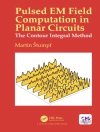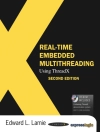This chapter centers around the question of how to represent the infor- mation contained in images. Together with the next two chapters it lays the mathematical foundations for low-Ievel image processing. Two key points are emphasized in this chapter. First, the information contained in images can be represented in en- tirely different ways. The most important are the spatial representation (Section 2.2) and wave number representation (Section 2.3). These repre- sentations just look at spatial data from different points of view. Since the various representations are complete and equivalent, they can be converted into each other. The conversion between the spatial and wave number representation is the well-known Fourier transform. This trans- form is an example of a more general dass of operations, the unitary transforms (Section 2.4). Second, we discuss how these representations can be handled with digital computers. How are images represented by arrays of digital num- bers in an adequate way? How are these data handled efficiently? Can fast algorithms be devised to convert one representation into another? A key example is the fast Fourier transform, discussed in Section 2.5. 2.2 Spatial Representation of Digital Images 2.2.1 Pixel and Voxel Images constitute a spatial distribution of the irradiance at a plane.
Bernd Jahne
Digital Image Processing [PDF ebook]
Digital Image Processing [PDF ebook]
Придбайте цю електронну книгу та отримайте ще 1 БЕЗКОШТОВНО!
Мова Англійська ● Формат PDF ● ISBN 9783662047811 ● Видавець Springer Berlin Heidelberg ● Опубліковано 2013 ● Завантажувані 3 разів ● Валюта EUR ● Посвідчення особи 6341875 ● Захист від копіювання Adobe DRM
Потрібен читач електронних книг, що підтримує DRM












